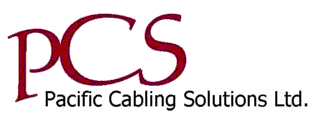Most
countries have their own standards writing agencies. However, the
basis for the majority of International standards are adaptations
from, or exact duplication of publications from the following Safety
Standard Agencies. These Standards Agencies are commissioned to create
and publicize International Safety Standards. They are standards
setting agencies only. The enforcement of and testing to these
standards is undertaken at the national level, but the final
interpretation of design and approval of the product always lies with
the National Test Agencies.
|
|

|
Canada
-CSA (Canadian Standards Association)
The
CSA mark may appear alone or with indicators. If it appears alone, it
means that the product is certified for the Canadian market, to the
applicable Canadian standards. If a product has features from more
than one area, (e.g.. electrical equipment with fuel burning
features), the mark indicates compliance to all applicable Standards.
|
  |
Canada
-CSA (Canadian Standards Association)
If
the CSA mark appears with the indicator "US" or
"NRTL" it means that the product is certified for the U.S.
market, to the applicable U.S. standards. If a product has features
from more than one area, (e.g.. electrical equipment with fuel burning
features), the mark indicates compliance to all applicable Standards.
|
  |
Canada
-CSA (Canadian Standards Association)
If
this Mark appears with the indicator "C and US" or
"NRTL/C" it means that the product is certified for both the
U.S. and Canadian markets, to the applicable U.S. and Canadian
standards. If a product has features from more than one area, (e.g..
electrical equipment with fuel burning features), the mark indicates
compliance to all applicable Standards.
|
|
|
United
States - UL (Underwriters Laboratories, Inc.)
Underwriters
Laboratories, Inc., is charted to establish, maintain, and operate
laboratories for the examination and testing of devices, systems and
materials to determine their relation to hazards to life and property,
and to ascertain, define and publish standards, classifications and
specifications for materials, devices, products, equipment,
constructions, methods, and systems affecting such hazards.
|
|

|
Underwriters' Laboratories of Canada
(ULC) is part of one of the world's leading standards development,
certification and registration organizations.
|
|

|
The
CE symbol identifies a product that conforms to a European Directive
developed by a coalition of European countries that form the European
Union (EU). This compliance is necessary for exporting certain cable
types to countries within the European community.
|
|
|
European agencies require the agency
marking to be molded into the plugs and connectors. There are two
alternatives for marking cordage, The manufacturer's name and the
National Test Agency symbol are printed on the blue primary conductor.
In addition to the primary conductor marking, the symbol for
CENELECó"HAR"ócan be printed on the outer jacket.
According to CENELEC and the national approval agencies, the
"HAR" symbol is not mandatory as long as a National
Test Agency symbol is on the cordset. The product is fully approved
for use in any Continental European country as long as it is
manufactured to CENELEC and foreign agency standards and carries one
of the above markings.
|
|
|
The primary responsibility of CENELEC is
to develop electrotechnical standards which represent a consensus
among its European member countries. While IEC publications are
generally the basis for European National Standards, CENELEC will
cover matters which its members feel are not completely addressed by
IEC documents.
|
|
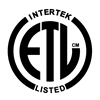
|
Intertek
Testing Services NA Inc.
is
in the business of product performance and safety testing and is among
the oldest and continuously operating testing laboratories in the
world. Today, the ETL Listed Mark can be found on numerous products
that people come in contact with on a daily basis.
A
product bearing the ETL Listed mark with the "us" identifier
at the 4 o'clock position has been tested and deemed compliant to U.S.
product safety standards only. An ETL Listed mark with a "c"
identifier at the 8 o'clock position means the product bearing it
complies with Canadian product safety standards only. And an ETL
Listed mark with both "us" and "c" identifiers at
the 4 o'clock and 8 o'clock positions respectively, signifies that the
product bearing the mark complies with both U.S. and Canadian product
safety standards.
|
|
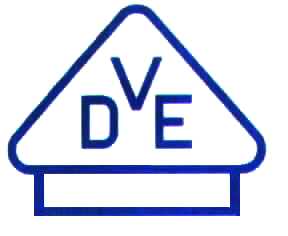
|
Germany
- VDE (Association of German Electrical Engineers)
The
recognized association for German standards is the German
Electrotechnical Commission of DIN & VDE (DKE). The DKE standards
are identical to IEC standards. The VDE mark indicates that a product
has been tested and approved by DKE and VDE.
|
|
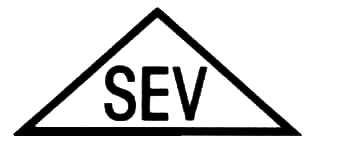
|
Switzerland
- SEV (Swiss Electrotechnical Association)
The
recognized association for Swiss standards is the Swiss Standards
Association (SEV). The SEV has adopted IEC standards almost without
exception. The SEV mark molded into a plug or connector indicates that
a product has been tested and approved for use in Switzerland. All
products to be sold in Switzerland must bear this mark.
|
|
|
Austria
- OVE (Austrian Association for Electrical Technology)
OVE
is the standards association and the National Testing Agency, IEC
standards are the basis for OVE standards. The OVE mark molded into a
plug or connector indicates that a product has been tested and
approved for use in Austria.
|
|

|
Norway
- NEMKO (Norwegian Board for Testing and Approval of Electrical
Equipment)
The
recognized association for Norwegian standards is the Norwegian
Electrotechnical Committe (NEK). NEK starndards are identical to IEC
and CENELEC. The NEMKO mark molded into a plug or connector indicates
that a product has been tested and approved by NEMKO.
|
|

|
Denmark
- DEMKO (Danish Electrical Testing Station)
The
recognized association for Danish standards is the Danish
electrotechnical committee (DEK). DEK adopts CENELEC and IEC standards
as their basis for standards. The DEMKO mark molded into a plug or
connector indicates that a product has been tested and approved by
DEMKO. Goods not bearing this mark cannot be sold in Denmark
|
|
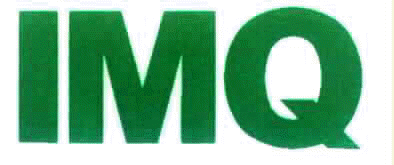
|
Italy
- IMQ (Italian Institute of the Mark of Quality)
The
recognized association for the preparation of Italian standards is the
Italian Electrotechnical Committee (CEI). The basis of CEI standards
is the IEC and CENELEC standards. The IMQ mark on the plug or
connector indicates that a product has been manufactured according to
CEI standards. There is no legal authority for the mandatory
application of standards in Italy.
|
|
|
Netherlands
- KEMA
The
recognized association for the standards in the Netherlands is the
Netherlands Electrotechnical Committee (NBC). The NEC adopts IEC
standards with few deviations. The KEMA mark on the plug or connector
indicates that a product has been tested and approved by NEC and KEMA.
The use of electrotechnical standards is voluntary in the Netherlands.
|
|

|
Sweden
- SEMKO (Swedish Institute for Testing and Approval of Electrical
Equipment)
The
recognized association for Swedish standards is the Swedish Electrical
Commission (SEK). There are more than 800 Swedish electrical
standards. Most of them are identical to IEC standards. Most of the
standards are voluntary, However, domestic electrical equipment is
subject to approval and cannot be sold unless approved by SEMKO. The
SEMKO mark molded into a plug or connector indicates that a product
has been tested and approved by SEMKO.
|
|
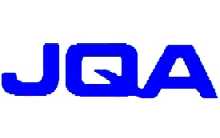
|
Japan
Quality Assurance Organization
(JQA)
is a not-for-profit organization specializing in registration services
for ISO management systems as well as safety testing and certification
for compliance to a variety of standards, both national and
international. We started our operation in 1957, initially as a
designated inspection body under Japan's Export Inspection Law. Their
work contributed to the postwar recovery of and export-oriented
Japanese economy by testing and certifying product destined for
overseas markets.
|
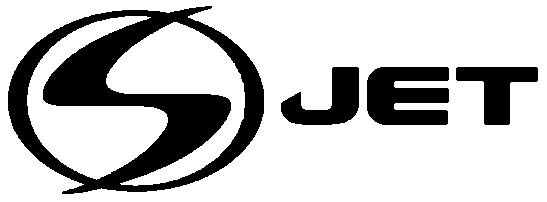 
|
Japan
Electrical Safety and Environment Technology Laboratories
S-JET
Certification Service for electrical products is designed to conduct
product tests on each model of electrical products as well as
inspections and continuous checks of manufacturing facilities and to
put certified marks on the products which have conformed to standards.
Distributors find it beneficial in improving the image of their stores
by gaining increased confidence from customers and by marketing
products bearing certified marks.
|
|

|
Finland
- SATIN (Electrical Inspectorate)
The
recognized association for Finnish standards is the Finnish
Electrotechnical Standards Association (SESKO). Most of the standards
set by SESKO are in accordance with IEC and CENELEC publications. The
SETI mark molded into a plug or connector indicates that a product has
been tested and approved by SESKO and SETI for use in Finland. Use of
this mark is mandatory only on equipment used in homes, offices, shops
& other premises where the public as admitted.
|
|

|
Belgium
- CEBEC (Belgium Electrotechnical Committee)
The
recognized association for Belgian standards is the Belgium
Electrotechnical Committee (CEB). The range of CEB standards is
similar to IEC. The CEBEC mark molded into a plug or connector
indicates that a product has been tested and approved by CEBEC for use
in Belgium. CEBEC approval is voluntary.
|
|
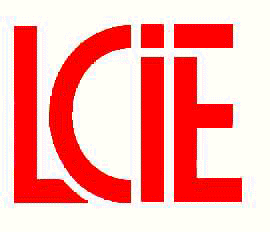
|
LCiE (France)
|
|

|
Australia
- ETSA (Electricity Trust of South Australia)
There
are six electrical testing agencies in Australia. Generally, an
approval with one of the agencies is accepted by the others. The
Standards Association of Australia (SAA) is the recognized association
for the preparation of Australian standards. SAA's policy is to use
IEC standards as its guidelines. The SAA mark molded into a plug or
connector indicates that a product has been tested and approved by one
of the Australian testing agencies and SAA. Australian agencies
require that an approval number be molded into the plug and connector.
The cordage itself is the same used in Europe.
|
|

|
BASEC,
the British Approvals Service for Cables
BASEC
provides product certification services for electrical cables,
data/signal cables and ancillary products.
|
MILSPEC
|
MILSPEC
a
procurement specification in the military series promulgated by one or
more of the military agencies and used for the procurement of military
supplies, equipment, or services.
|
|
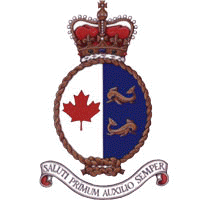
|
Canadian Coast Guard
The
Coast Guard is responsible for identifying technical and testing
requirements for approved equipment. Equipment manufacturers are
responsible for having the testing done, often by an independent
laboratory. If the device passes the tests and meets all of the other
requirements, the Coast Guard issues a formal approval certificate
with a number that the manufacturer will affix to each approved device
of the same design. After a design is formally approved, the
manufacturer conducts production inspections and tests to make sure
that production runs of approved items continue to meet the
requirements for the device that was originally approved.
If the manufacturer changes any part
of an approved item, the Coast Guard evaluates the changes before they
are included in any device which is claimed as Coast Guard approved.
Sometimes, this means that additional testing is required
|
|
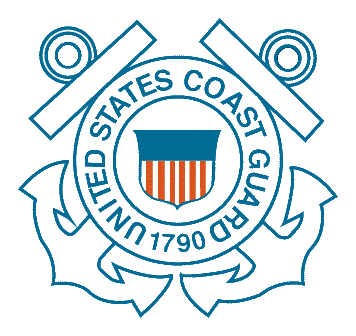
|
U.S.
Coast Guard
The
Coast Guard is responsible for identifying technical and testing
requirements for approved equipment. Equipment manufacturers are
responsible for having the testing done, often by an independent
laboratory. If the device passes the tests and meets all of the other
requirements, the Coast Guard issues a formal approval certificate
with a number that the manufacturer will affix to each approved device
of the same design. After a design is formally approved, the
manufacturer conducts production inspections and tests to make sure
that production runs of approved items continue to meet the
requirements for the device that was originally approved.
If the manufacturer changes any part
of an approved item, the Coast Guard evaluates the changes before they
are included in any device which is claimed as Coast Guard approved.
Sometimes, this means that additional testing is required.
|
|
|
CENELEC
The
primary responsibility of CENELEC is to develop electrotechnical
standards which represent a consensus among its European member
countries. While IEC publications are generally the basis for European
National Standards, CENELEC will cover matters which its members feel
are not completely addressed by IEC documents.
|
|

|
NEMA
attempts to promote the competitiveness of its member companies by
providing a forum for the:
- Development of technical standards
that are in the best interests of the industry and the users of its
products
- Establishment and advocacy of
industry policies on legislative and regulatory matters that might
affect the industry and those it serves
- Collection, analysis, and
dissemination of industry data
|
|
|
International
Electrotechnical Commission
The IEC is composed of representatives from manufacturers, users, and
national testing labs from many of the European industrialized nations.
Their primary directive is to publicize recommendations for safety
standards. Although IEC publications do not have the force of law, in
most cases new standards published by the National Testing Agencies in
Europe and Australia have only minor deviations from IEC publications. |
|

|
The
mission of the Occupational Safety and Health Administration (OSHA) is
to save lives, prevent injuries and protect the health of America's
workers. To accomplish this, federal and state governments must work in
partnership with the more than 100 million working men and women and
their six and a half million employers who are covered by the
Occupational Safety and Health Act of 1970.
|
|

|
DNV
DET NORSKE VERITAS
Established
in 1864, DNV is an independent foundation with the objective of
safeguarding life, property and the environment and is a leading
international provider of services for managing risk.
DNV operates in multiple industries
internationally, but in four industries we have a strong market
presence and a large customer base. These industries are:
- Maritime
- Oil & Gas
- Process
- Transportation (Rail and
Automotive)
|
